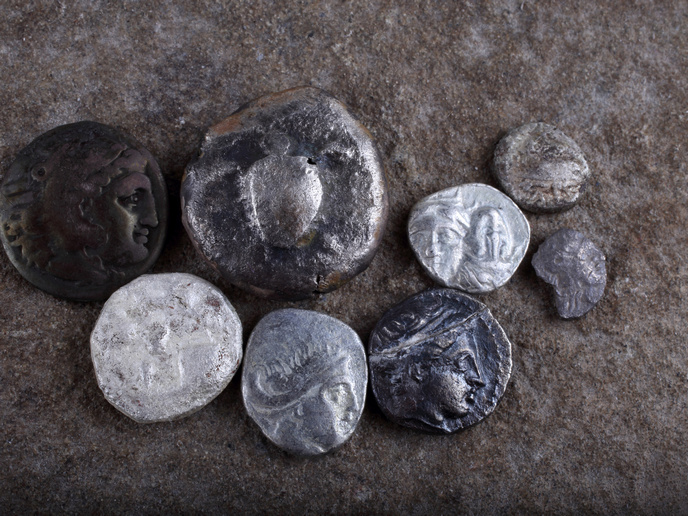Tracing the flow of silver in the ancient Mediterranean basin
Silver is malleable, durable and it packs a lot of value into small volumes. It also has the benefit of not being munched on by rodents. All of these factors, and more, led to the adoption of silver bullion as currency from the Bronze Age to the Middle Ages. The advent of silver coinage freed payment from weighing and all the work that went into assessing purity. This period started in the 6th century BCE and met nearly instant success, resulting in a flurry of innovation and social change. For example, in ancient Greece, coinage facilitated the recruitment of large numbers of mercenary hoplites, the ultimate invention of Greek military art. “Large bulk freighters sent by the Greeks to purchase cereals, provided Egypt with their only source of silver. Blood money paid to the Greek mercenaries by Alexander the Great also created the flow of considerable amounts of silver money,” explains Francis Albarède, coordinator of the SILVER project, which was funded by the European Research Council. And when that mercenary gets home with his silver: “He buys a piece of land, a pair of slaves, and marries his wife. He then goes to the local council house where he expects to be heard by local authorities. It’s no coincidence that, in the course of the 5th century BCE, 50 Greek city states converted to democracy,” says Albarède, professor emeritus at the École Normale Supérieure de Lyon, France, the project host. The team set out to further our understanding of where the silver was mined, when it was minted and how it was used. SILVER explored several avenues, including researching the sources of un-minted silver, establishing the link between Greek mines and the earliest Greek coins, and analysing Alexander the Great’s captured Persian treasure to identify where the silver was mined.
Lead isotopes suggests potential sources of bullion
Silver, extracted by the metallurgical technique known as cupellation, is usually over 90 % pure, unlike lead and copper where the metal might make up a smaller part. As the rate of the radioactive decay of uranium and thorium to different lead isotopes is well understood, and the abundance of lead isotopes varies with tectonic age of the local source, geochemists can ‘read’ the history of the mining districts in which the silver-bearing lead ores grew during geological times. “Our group,” notes Albarède, “introduced silver isotope analysis to history and archaeology in the early 2010s. High precision is needed because the range of variation is small, and this matters as silver isotopes allow the archaeologist to assess whether the bullion extracted from a particular mine has been used to mint silver coinage.” Among all the ores suggested by lead isotopes as potential provenances of bullion, silver is used to weed out the potential mines which could not have produced enough precious metal to support minting. The combination of lead and silver isotopes reduces the number of sources of bullion acceptable for a given coin by a factor of about 20.
Isotopic analysis reveals the role the flow of silver played in antiquity
The project revealed some fascinating findings. “In 330 BC, Alexander the Great captured enough silver from the Persian palaces such as Persepolis and Susa, to load on 150 semi-trailer trucks,” adds Albarède. The origin of these silver treasures can be explored by analysing lead and silver isotopes from Persian military issues and from the abundant silver coinage of Alexander and his successors. “Most of the silver has its sources around the Aegean. The treasures hoarded by Darius III were accumulated through the tributes paid by the different satrapies of the Empire. This imposed flow increased the pressure to mine silver around the Aegean and forced the satrapies devoid of silver mines, typically Egypt, to engage in long-distance trade to obtain the bullion to be paid to the Persians,” Albarède explains. In a later period, the sharp increase in the number of shipwrecks on the floor of the Mediterranean in the 6th century BCE reflects the expansion of silver mining, the availability of Aegean bullion and the minting of money. The project is finished, and the impact is now being assessed. Albarède hopes the work will pave the way for a global and quantitative understanding of the history of monetary development in the ancient Mediterranean. “In the long term, it will contribute to the emergence of a community of analysts, numismatists and economic historians with shared expertise about the monetisation of ancient societies, and their management of precious metal resources,” he says.
Keywords
SILVER, European Research Council, lead isotopes, bullion, isotopic analysis, antiquity, Alexander the Great, ancient Greece, Mediterranean basin, mining, monetisation, trade



